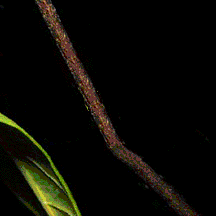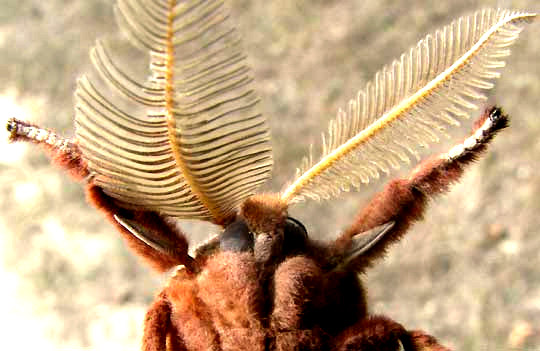The four stages of simple metamorphosis are:
EGG --> LARVA -->PUPA --> ADULT
 At the left you see the last three stages of complete metamorphosis for the Monarch Butterfly. First an adult female lays a tiny egg. From this egg hatches a striped caterpillar, which is the Monarch Butterfly's larva. When the caterpillar grows to a certain point it attaches itself to something like a stem, develops a kind of husk and becomes a pupa, which in the world of butterflies is known by a special name -- the chrysalis. Once this "resting stage" ends, the chrysalis "shell" splits, and out comes the winged butterfly, which is the adult stage.
At the left you see the last three stages of complete metamorphosis for the Monarch Butterfly. First an adult female lays a tiny egg. From this egg hatches a striped caterpillar, which is the Monarch Butterfly's larva. When the caterpillar grows to a certain point it attaches itself to something like a stem, develops a kind of husk and becomes a pupa, which in the world of butterflies is known by a special name -- the chrysalis. Once this "resting stage" ends, the chrysalis "shell" splits, and out comes the winged butterfly, which is the adult stage.
Just imagine: These very common animals don't grow up the way we humans do! It's almost as if when a human is born first we're an egg, then we're a dog, then a box of macaroni, and only finally an adult human!
Coleoptera (beetles)
Lepidoptera (butterflies & moths)
Diptera (flies)
Hymenoptera (ants, wasps, bees)
Siphonaptera (fleas)
Strepsiptera (twist-winged parasites)
Mecoptera (scorpionflies)
Tricoptera (caddisflies)
Neuroptera (antlions, lacewings)
*Thysanoptera (thrips)
* Thrips metamorphosis is between simple and complete
Finally one day this dead-looking thing splits like a ruptured watermelon, and what emerges is a creature profoundly obsessed with sex! In a few adult species, such as most members of the moth family Saturniidae, the adults don't even possess mouth parts. They emerge from their pupae with enough nutrients stored in their bodies to carry out a very brief life consisting of finding a member of the opposite sex, mating, and then the male dies, the female lays her eggs, and finally she dies, too! Below is a picture of a member of the Saturniidae, a Polyphemus Moth, Antheraea polyphemus, with no mouth parts.

The oldest fossil insects may be about 400 million years old, and those species underwent simple metamorphosis. Much later, around maybe 280 million years ago, insect species appeared displaying a primitive form of metamorphosis that eventually led to complete metamorphosis. You can read much more about this in a freely available Scientific American article, "How Did Insect Metamorphosis Evolve?"
In that article it's suggested that the primary advantage of complete metamorphosis is to eliminate competition between young and old insects of the same species. Insect larvae and their adult forms occupy very different ecological niches. Caterpillars generally eat leaves, while adults may flit around taking nectar from flowers. In a given area, then, greater numbers of a species can exist if young and old eat different foods, than if they were competing for the same foods. Moreover, Nature simply seems to "like" lots of diversity, and life.